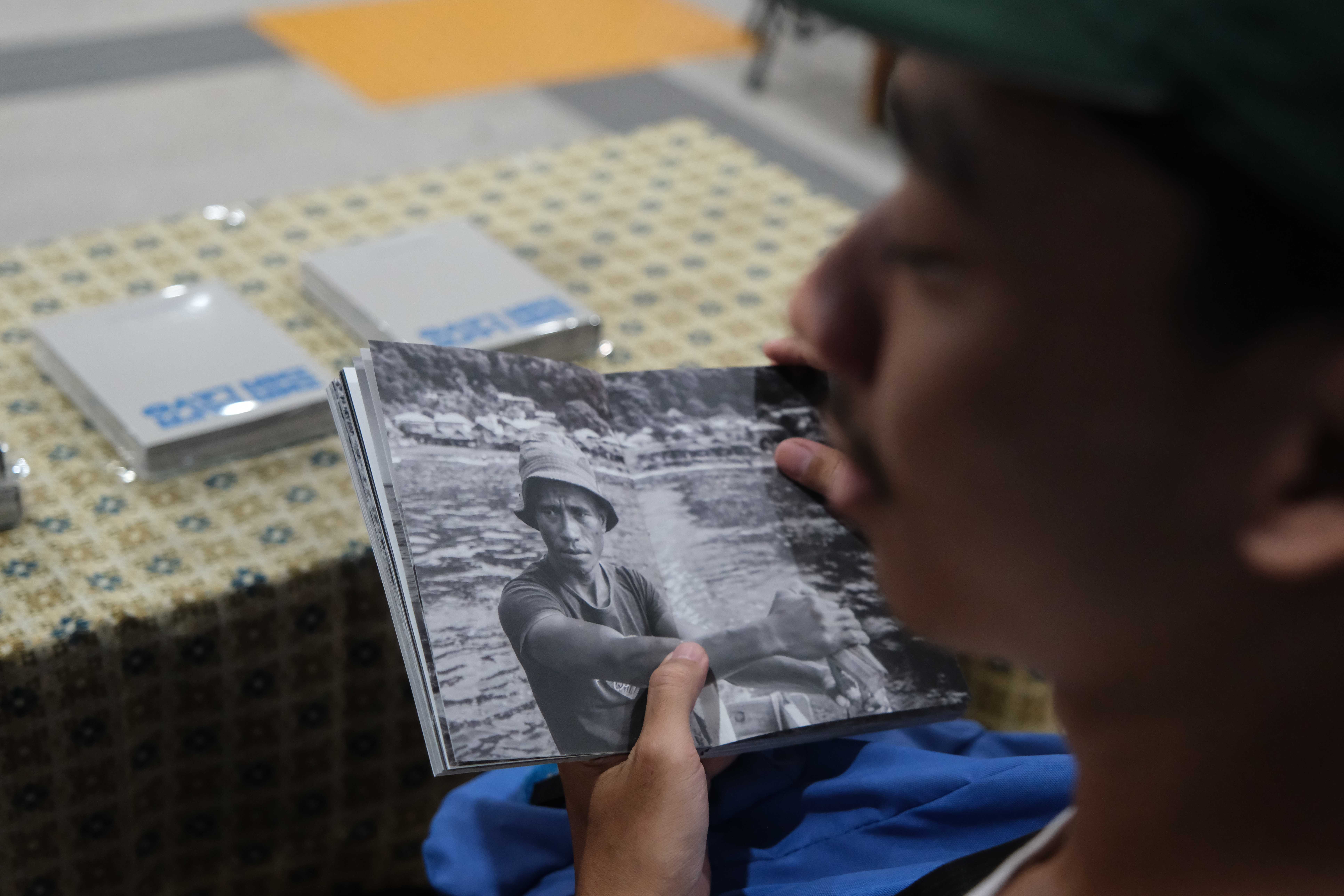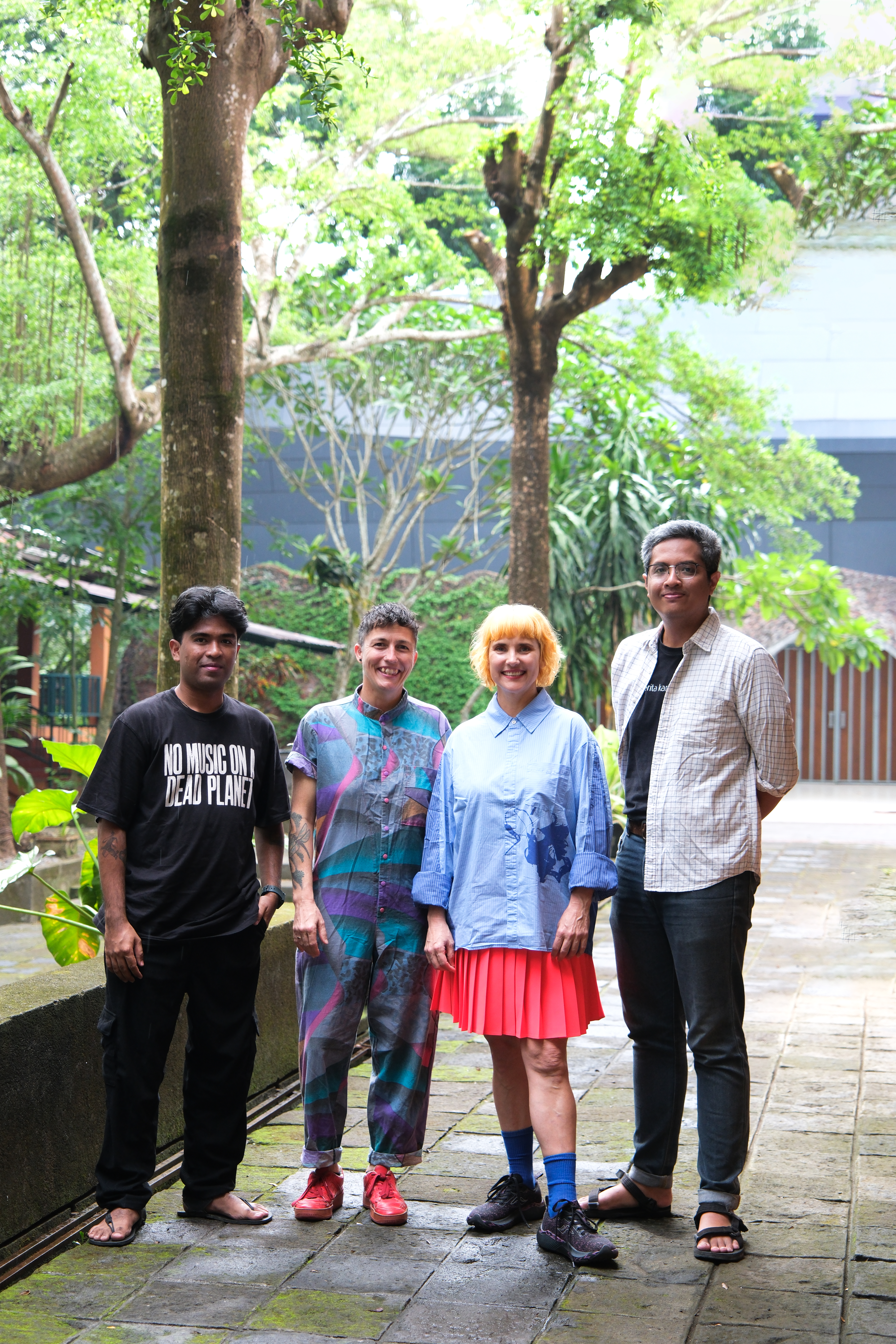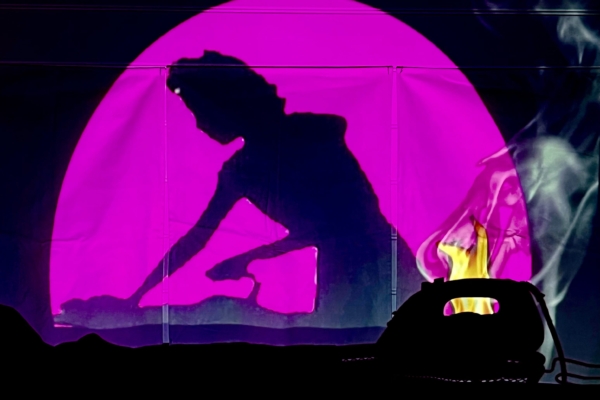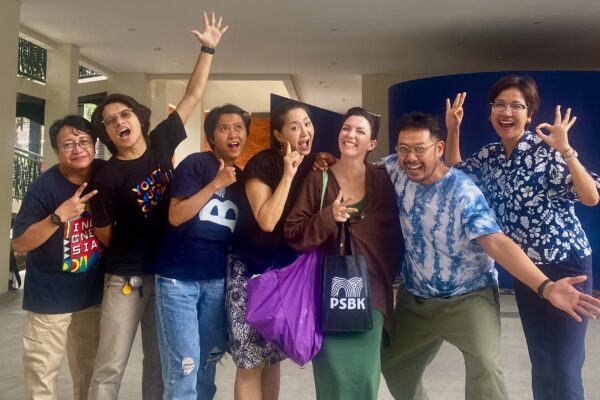Written by: (Melania) Jack, The Ironing Maidens.
In late October, Patty and I travelled to Yogyakarta for the Dialog Lensa artist residency at PSBK — a special partnership between PSBK and NorthSite Contemporary Arts, born out of participation in the Regional//Regional program through Asialink Arts. We arrived knowing this would be a big step for us, but we didn’t realise how transformative it would be. The residency stretched us, surprised us, and opened doors into new ways of composing that feel different from our previous work.
Over two months online, we met regularly with Curator Kurniadi Widodo (Yogyakarta); artist Vickram Sombu from Kupang, East Nusa Tenggara, Indonesia; and Doni, Jeanie and Gita from PSBK, along with Ashleigh from NorthSite. These conversations centred around the photographs Vickram had taken in Lamelara — a small village shaped by deep traditions and a powerful relationship with the ocean. Vickram spoke about being welcomed into the community during a period of mourning for his recently departed mother, and how the village held him in a way that felt both grounding and generous.

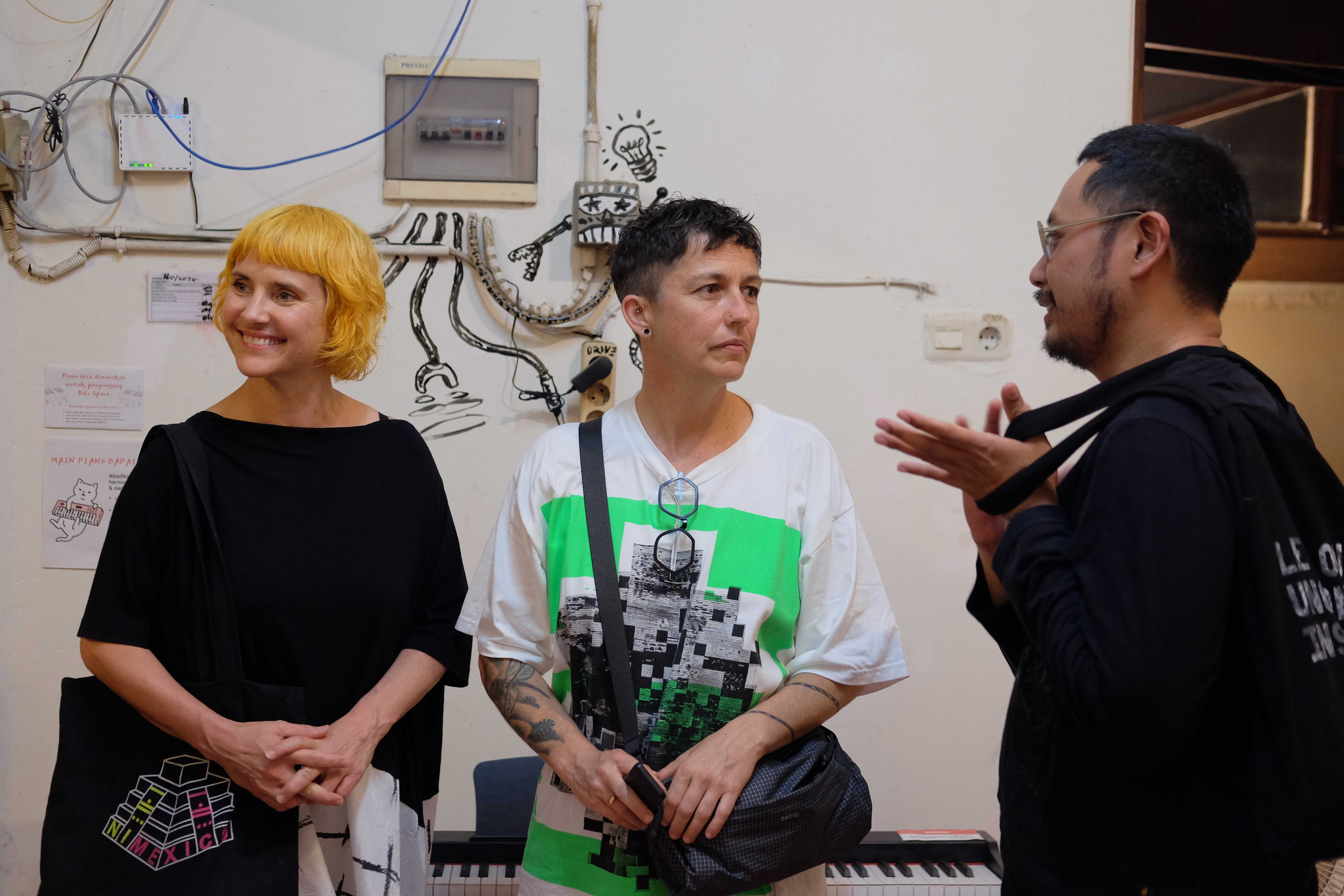
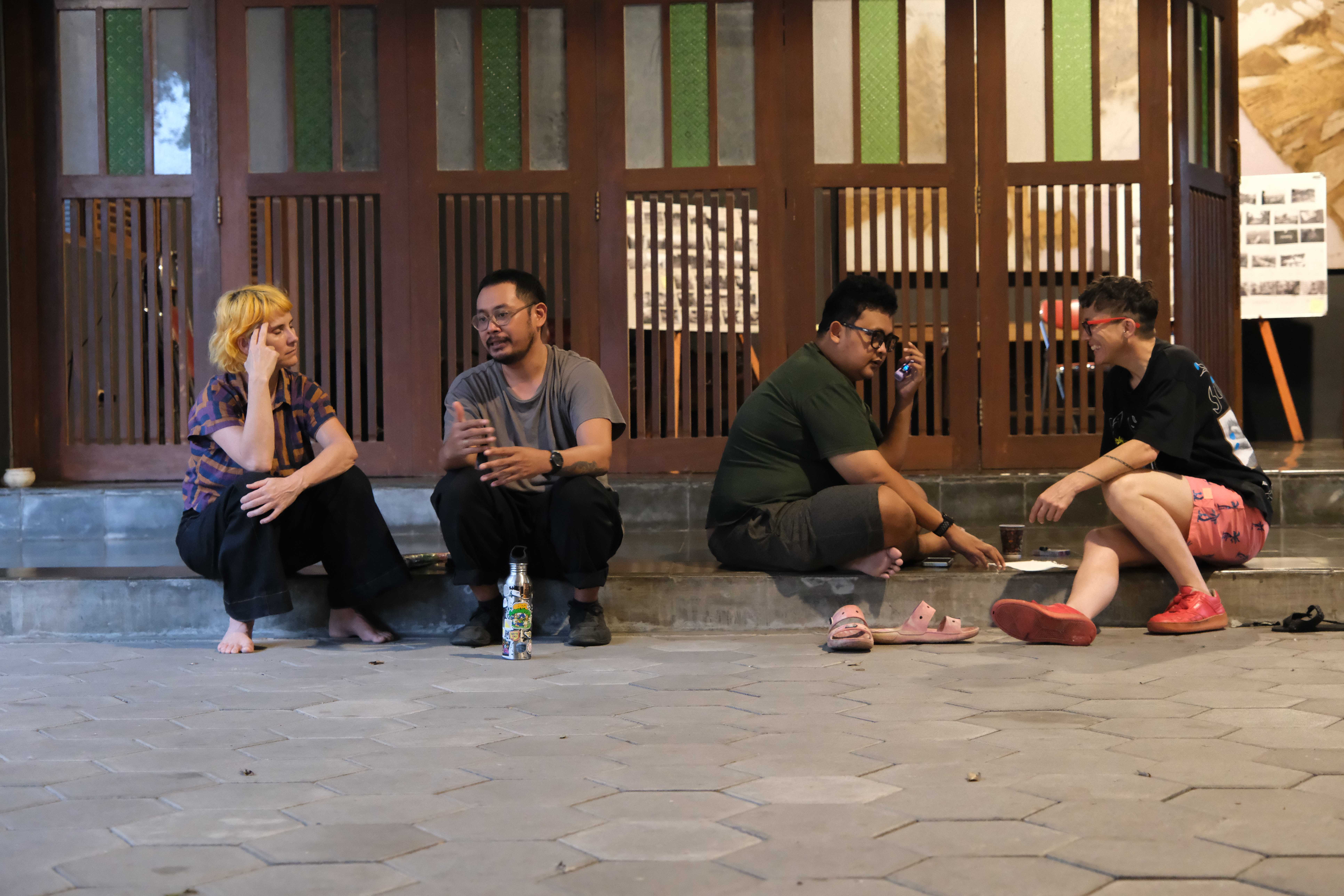
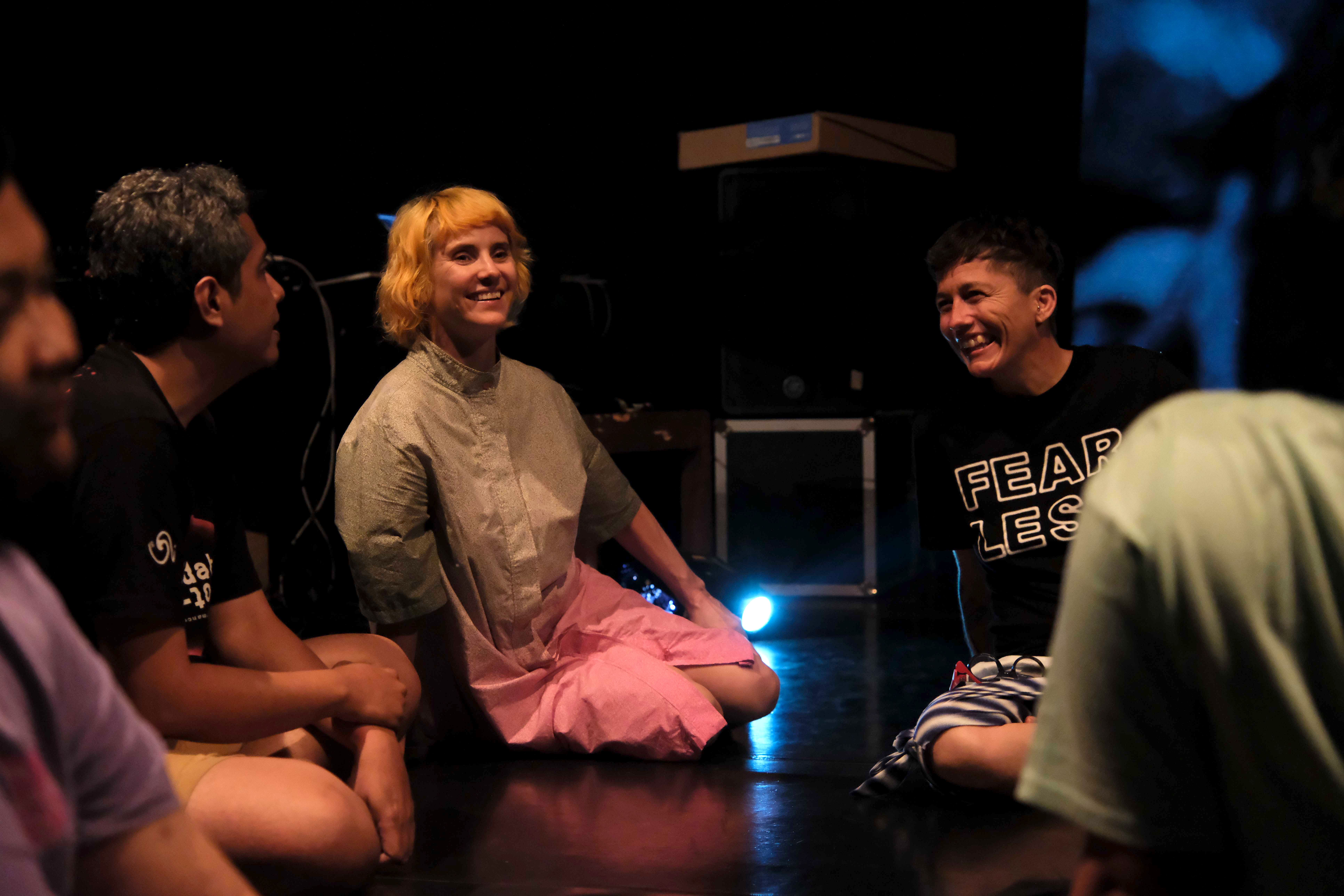
The land in Lamelara is volcanic and cannot grow crops; the ocean is their garden, their sustenance, their teacher. Before going out to sea, they ask the land for permission — and if the answer is no, they don’t go.
I kept imagining what it would mean to live like that: standing at the edge of a supermarket and asking if you’re allowed to enter — and listening if the answer is no. This practice of seeking permission stayed with me during the residency.
When we first learned about the photographs and the cultural depth behind them, we hesitated. It felt so specific, so important — and we wondered if we were the right people to respond. But Doni and Jeanie reminded us that Dialog Lensa is, at its heart, a dialogue. Between images and sound. Between artists. Between cultures. The work lives in the relationships between these perspectives, in the gentle friction and the unexpected alignments.
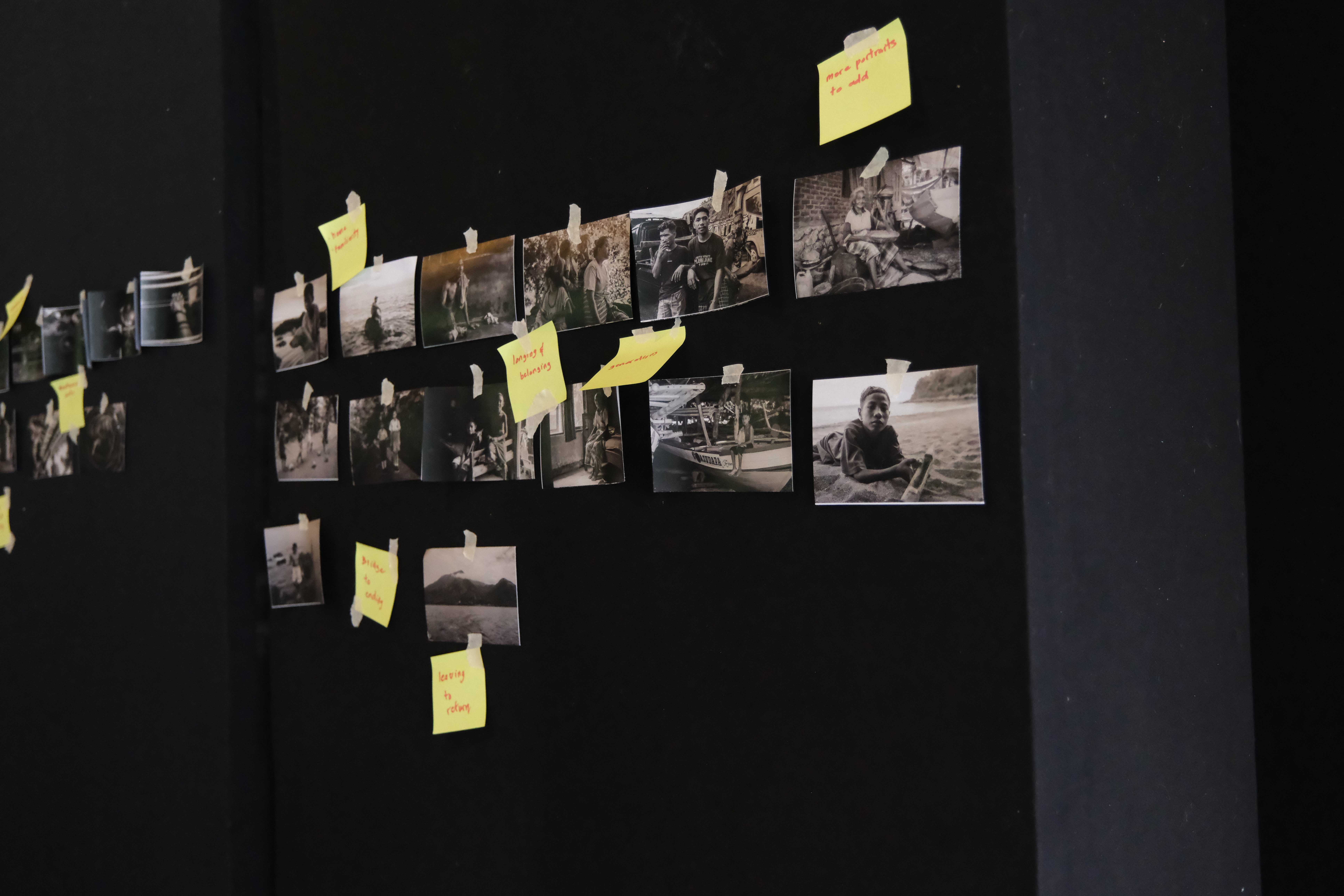
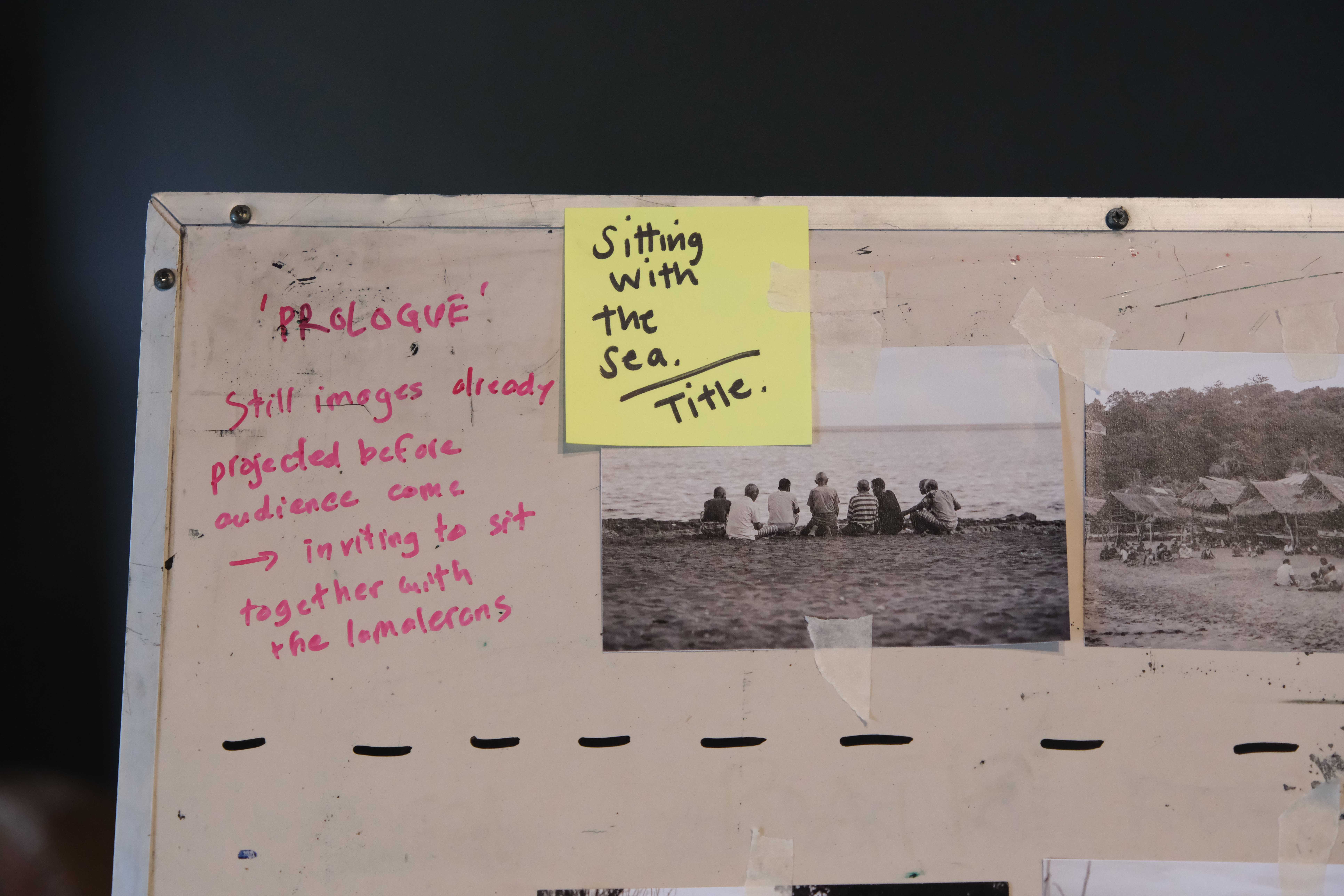
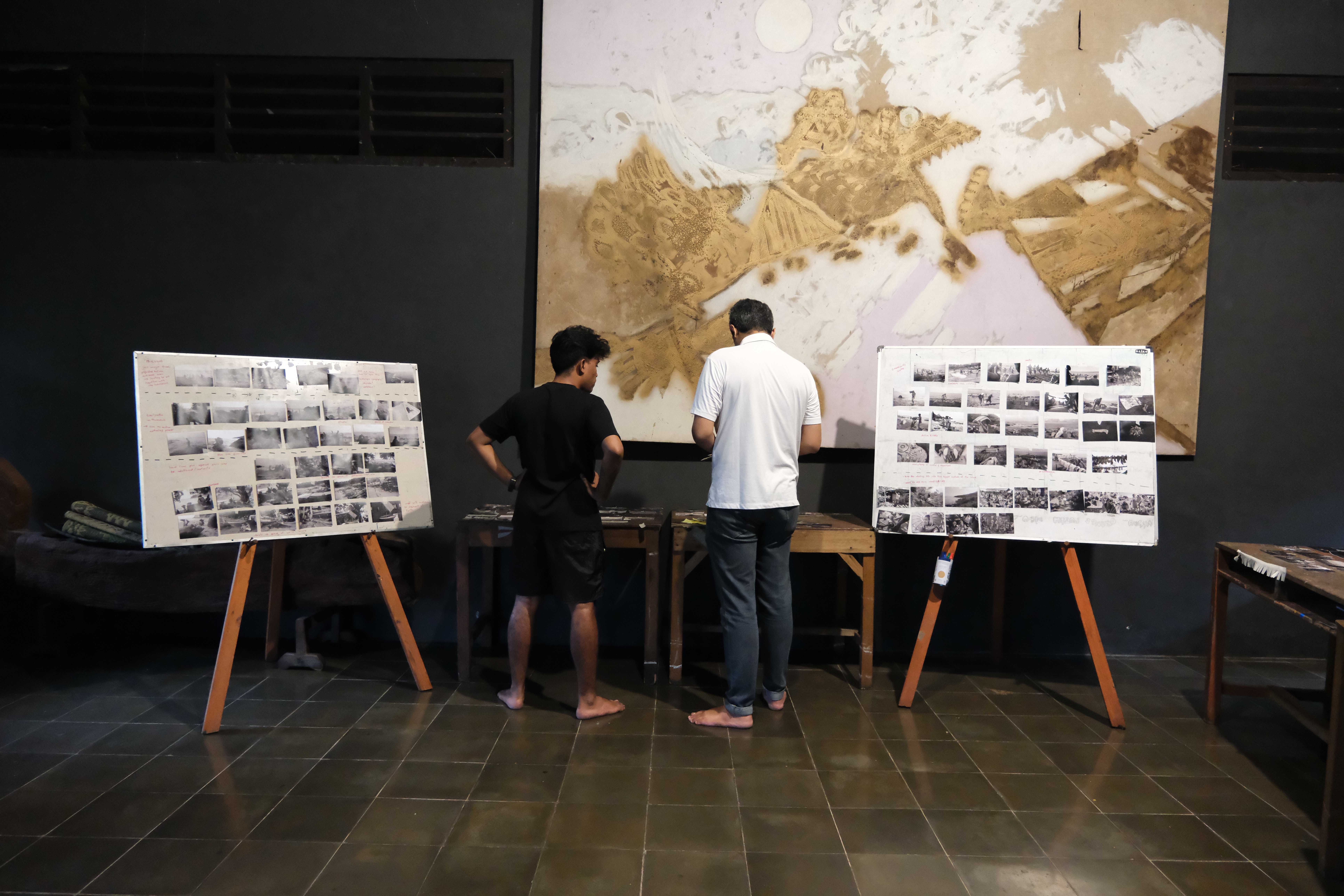
Throughout our online phase, Patty and I improvised and composed music in response to the images. We experimented with texture and pacing, letting the photographs lead us. We learned that sperm whales communicate through rhythms and clicks, and that young whales take years to learn their ancestral songs. When we played whale recordings for Vickram, he immediately said they reminded him of the tale leo — the hand-twisted rope used on the village boats. The rope carries the presence of ancestors; the sound echoed that connection. These moments of resonance shaped how the music formed — slow currents, shifting textures, vocal lines that slipped in lightly as if arriving from somewhere else.
When we finally arrived in Yogyakarta for the two-week intensive, everything deepened. Being at PSBK together allowed us to step into the physical world of the project. We chose our space, imagined how the work might live inside it, and returned again and again to the intimacy in Vickram’s photographs. There is a closeness in the images — as if the camera disappears and you are simply sitting with the villagers: beside the ocean, in the boats, in the market, under the shade of trees. We wanted the audience to feel that, too.
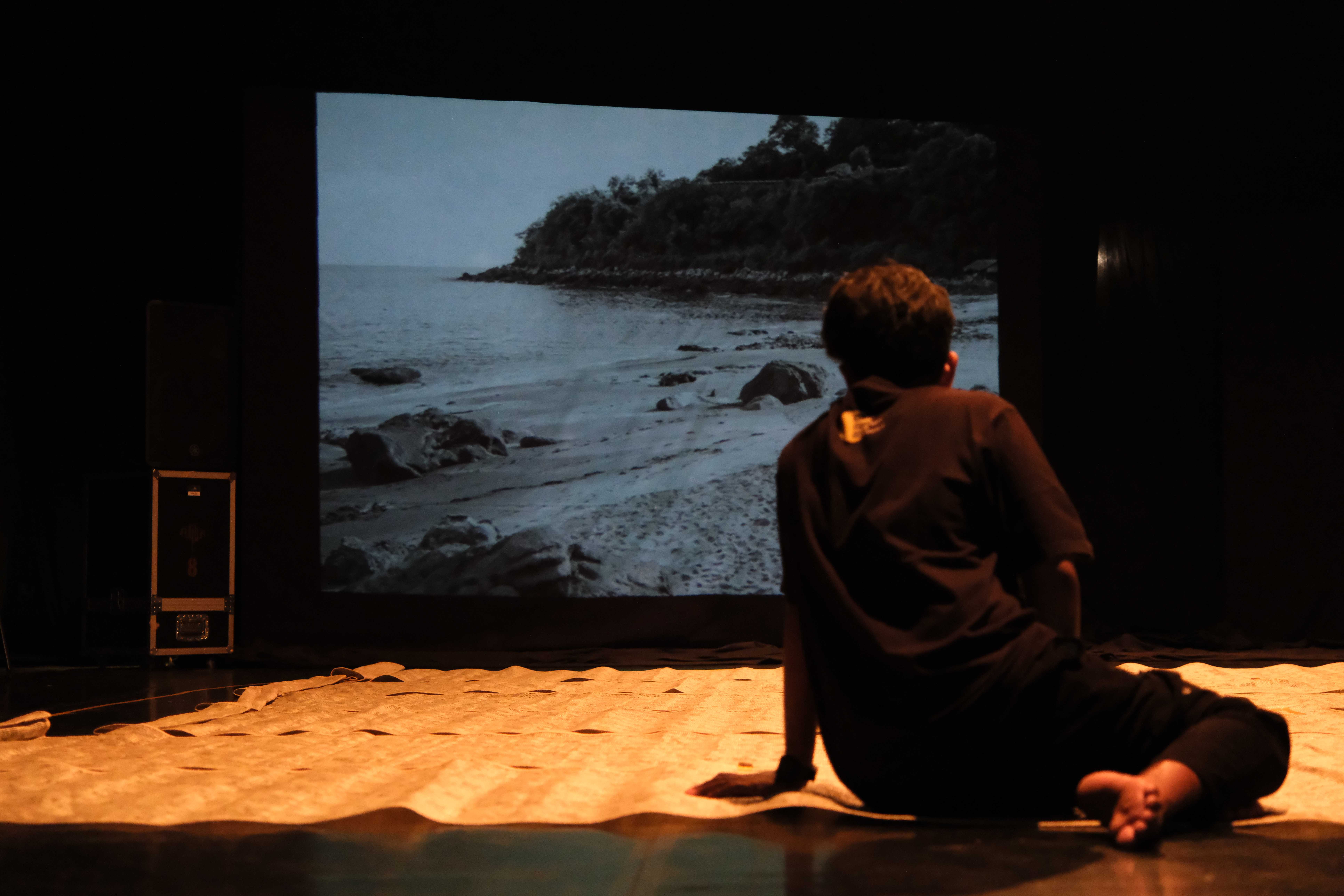 We scaled the images to near life-size and began imagining a geography of screens — five in total — placing ocean images to one side and mountains to the other. Once we started building, there was no turning back.
We scaled the images to near life-size and began imagining a geography of screens — five in total — placing ocean images to one side and mountains to the other. Once we started building, there was no turning back.
The install was big: rigging and matching projectors, building screens, turning the open room into a black box. Time was tight and technology misbehaved in all the classic ways. There were moments when the whole team felt at breaking point, but someone would inevitably call out, “Oh, Technologica!” (a running joke from Vickram), and we’d fall into laughter and keep going.
Technically, this residency pushed us to work with and experiment with some new elements we had been moving toward. Patty mixed the sound in a six-speaker immersive space. I completed my first five-screen multi-channel projection.


The subject matter of the work pushed us to really dig deep into our vegan politics and posthuman explorations. While it was personally challenging for me to see the ocean animals being killed for food, I also saw how, for the Lamelerans, there is no difference between themselves and the whales. Sometimes the whale dies; sometimes some of their fisherpeople die. It is all connected. It is a deep and long relationship that stretches back as far as their people do.

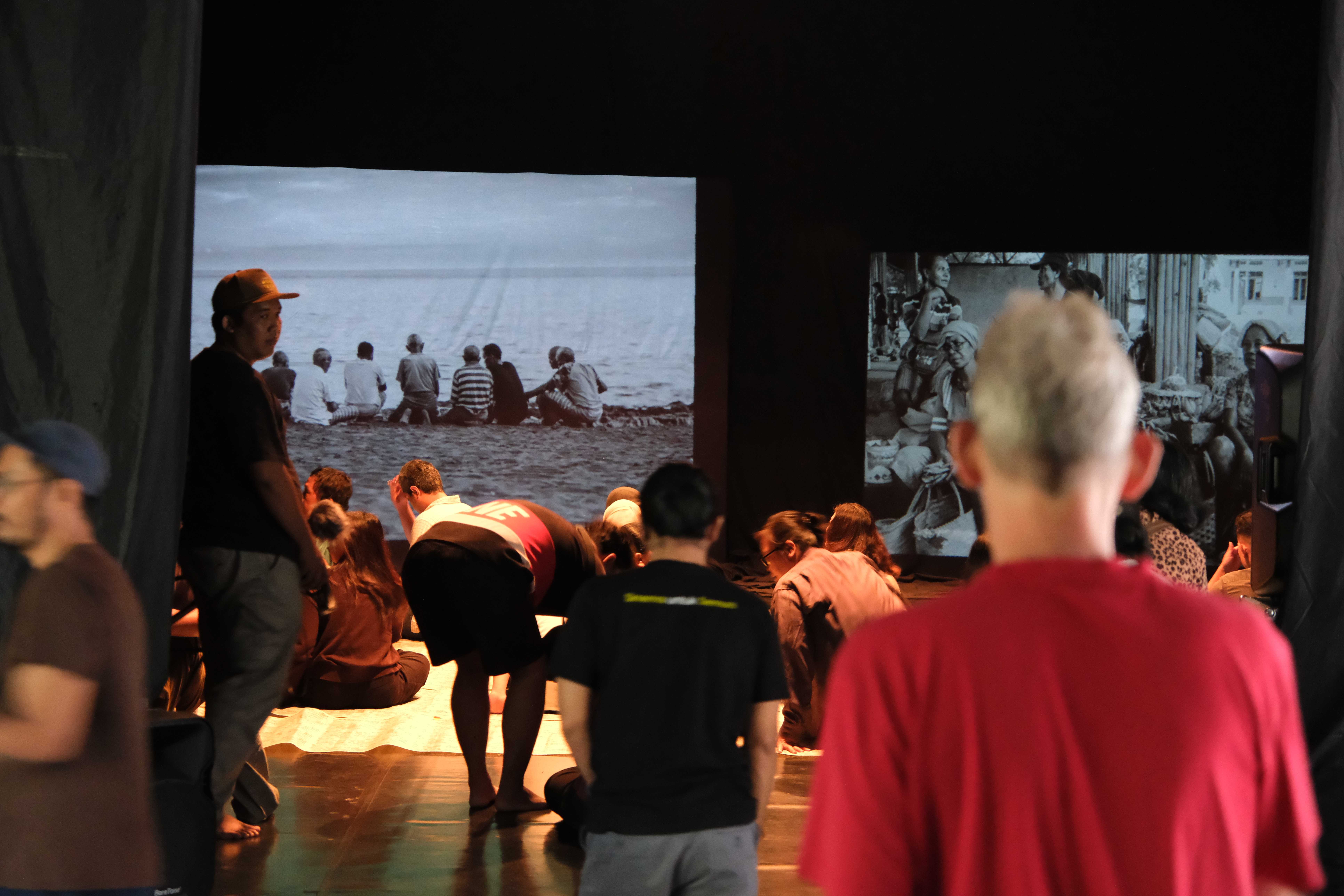
Our soft opening, “The Grand Rehearsal,” was nerve-wracking. The first two shows had their cracks — even if only the artists noticed — so after each one we tweaked and refined, chasing alignment between sound, image, timing and intention. And then, on the final performance, everything clicked. The images aligned exactly as we intended. Patty pushed the sound up and the whole piece seemed to breathe and sing. It was electric. We all felt it — that rare, euphoric exhale that comes after pushing yourself to the edge of what you think you can do.
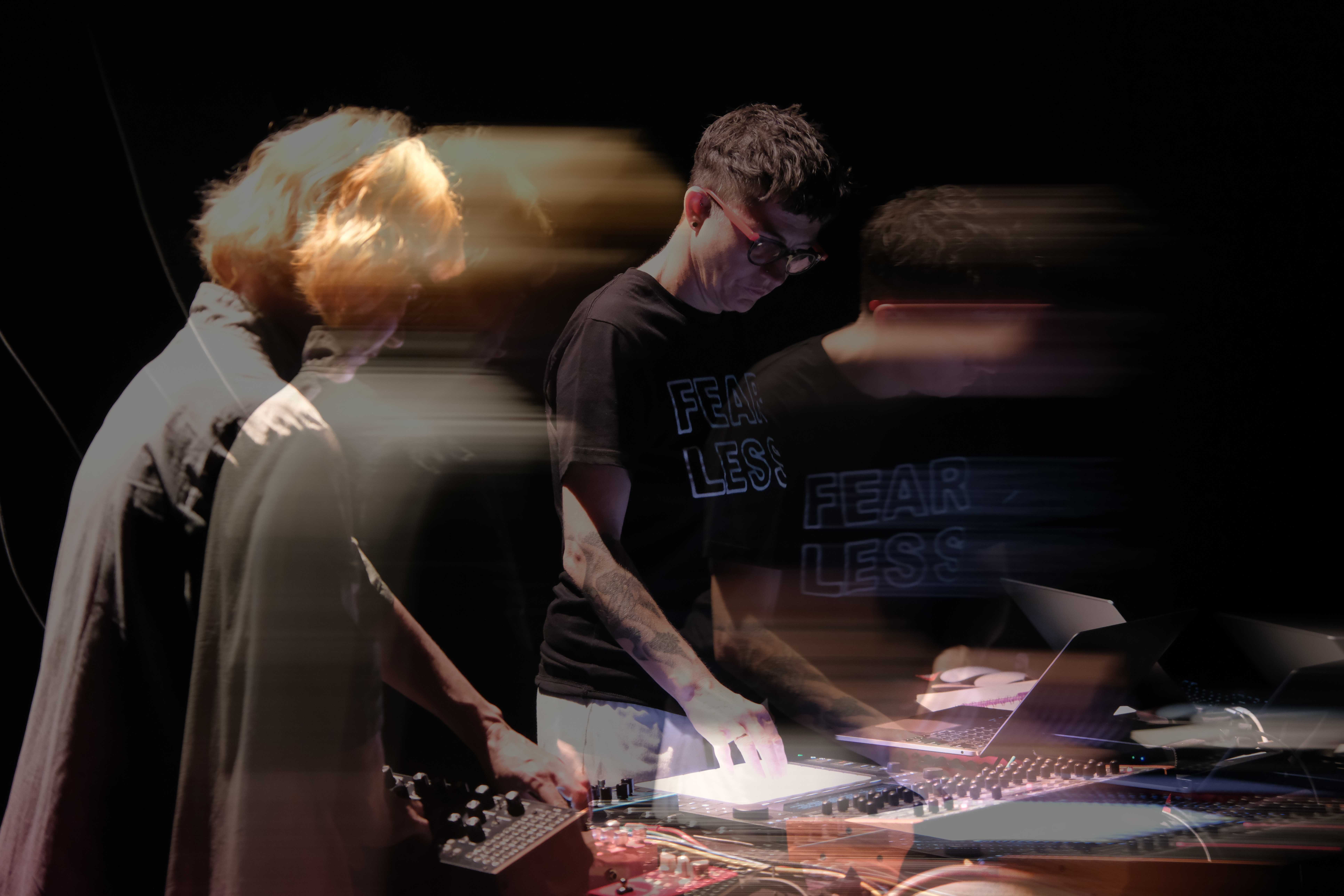
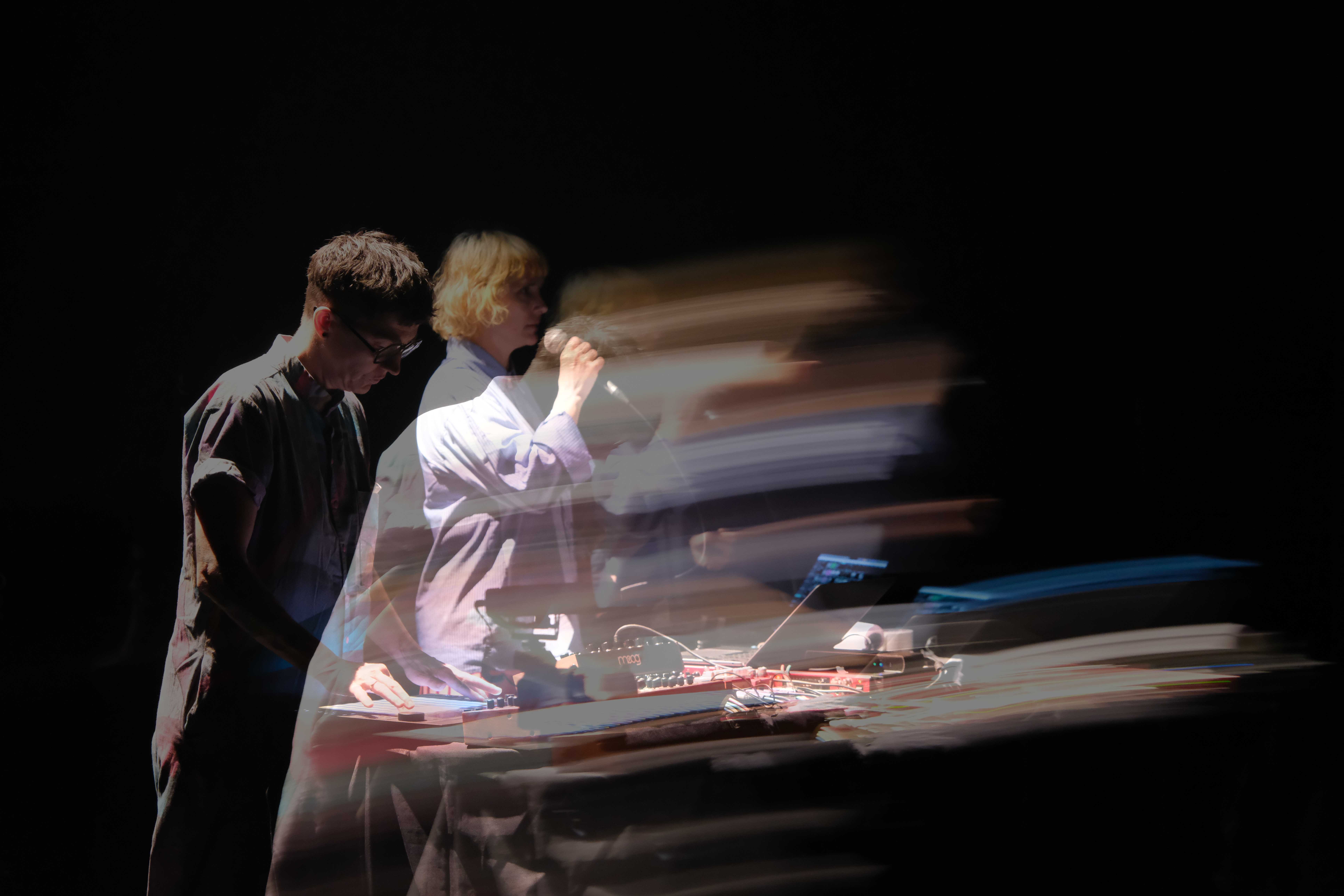
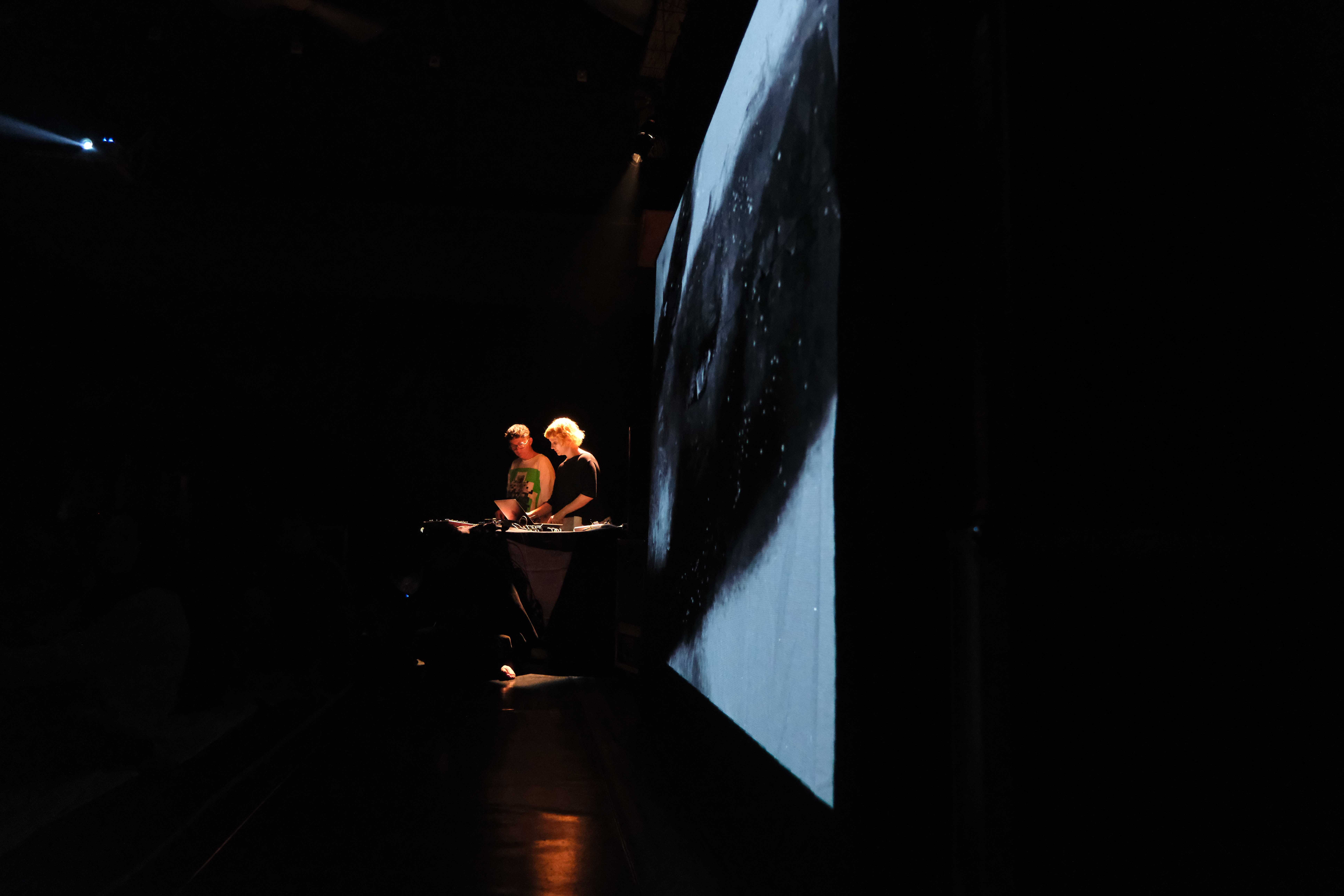

A residency invites this kind of transformation. It pulls you out of your familiar world and opens up space to risk, reinvent, try again. It reminds you that vulnerability is part of the work.
For me, Dialog Lensa was a reminder of why we make art at all: for connection, for dialogue, for the chance to sit with others — even across vast distances — and ask, together, for permission to enter the ocean.
(Melania) Jack, The Ironing Maidens.
This project has been assisted by the Australian Government through Creative Australia, its principal arts investment and advisory body.
About PSBK
PSBK (Padepokan Seni Bagong Kussudiardja) is a place-based arts centre that champions the arts as a vital necessity for humanity and the advancement of culture. Established in 1978 to support a curriculum-driven residency program for Indonesian creative practitioners, PSBK continues the late Bagong Kussudiardja’s commitment to artistic innovation, creative learning, access to the arts, and pushing strategies in new directions. Since 2009, significant physical transformations have transpired to ensure high-quality, accessible spaces that nurture the relational development between the arts, artists, and communities through creative learning and art appreciation activities.
PSBK was founded with the DNA of education—both education in the arts and education through the arts. Recognising art as essential for humanity and cultural advancement, PSBK strives to ensure quality and accessibility to art venues as essential resource centres. It seeks to enhance human capacity by developing professional growth within the art ecosystem and beyond, and to foster the art appreciation process by consistently implementing annual programs that cultivate deeper relationships among art, artists, and audiences.
Valuing human connectivity, PSBK also strives to nurture cultural exchanges that nourish growth, shared objectives, and collective purpose. The organisation seeks collaborations with people who genuinely align with its mission and are open to mutual discovery, understanding, and inspiration.
About Dialog Lensa
Performing captivating visual narratives through lens-based technology.
Dialog Lensa is a performance platform that showcases photography-based works through multimedia projections.
Since its inception in 2020, this expressive space has brought together photographers and other creators, including musicians, choreographers, and video editors, fostering a cross-disciplinary creative process facilitated by PSBK.
This platform aims to connect visually driven and technology-based works with a diverse audience interested in both visual and performing arts.

